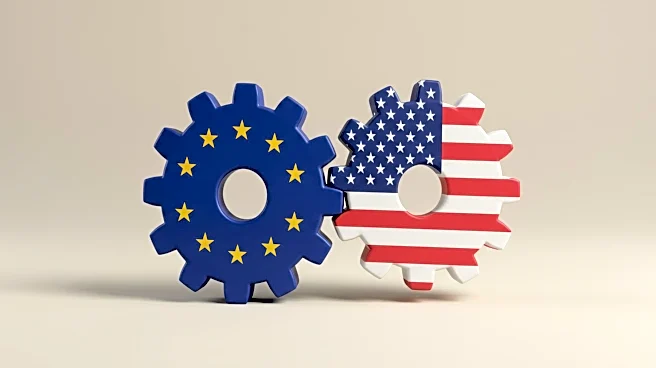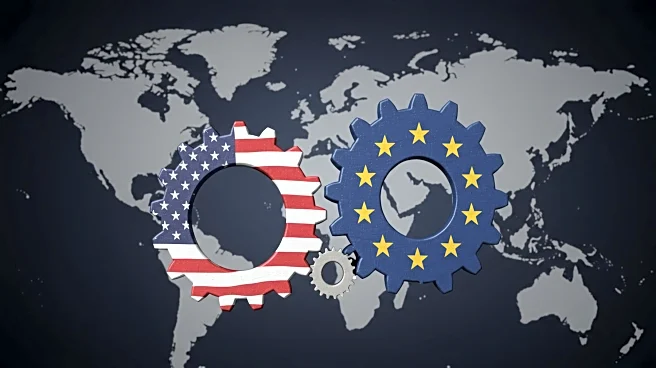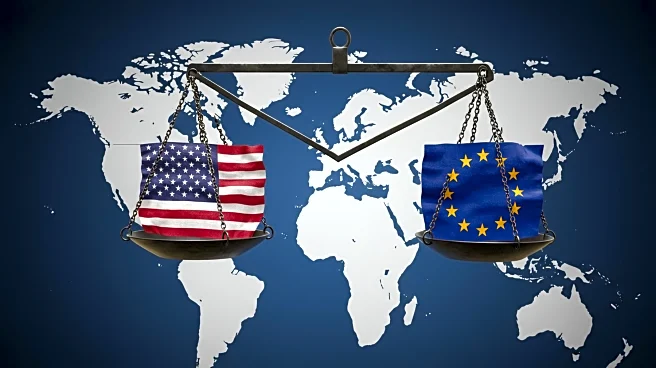What is the story about?
What's Happening?
The United States and European Union have released new details of their trade agreement, focusing on tariffs for cars and pharmaceuticals. The agreement establishes a 15% tariff rate for EU pharmaceuticals, significantly lower than the previously threatened 250% by President Trump. Additionally, the U.S. will reduce tariffs on European vehicles and auto parts from 27.5% to 15%, contingent on the EU lowering its industrial tariffs. This framework aims to strengthen the trade relationship between the U.S. and EU, which involves substantial annual trade volumes.
Why It's Important?
The new tariff framework is crucial for both U.S. and EU economies, as it impacts major industries like pharmaceuticals and automotive manufacturing. By reducing tariffs, the agreement seeks to lower costs for consumers and businesses, potentially boosting trade and economic growth. The EU's commitment to purchasing U.S. goods and investing in strategic sectors further underscores the importance of this agreement in fostering economic collaboration and reindustrialization efforts.
What's Next?
The agreement is described as a 'first step' in a broader process, suggesting that further negotiations and expansions are likely. Stakeholders will monitor the implementation of tariff reductions and the EU's legislative actions to ensure compliance. The focus will be on maximizing the economic benefits of the agreement while addressing any challenges that arise from the new trade dynamics.
Beyond the Headlines
The agreement reflects broader geopolitical and economic strategies, as both the U.S. and EU seek to strengthen their trade ties amidst global uncertainties. The emphasis on reducing tariffs and increasing investments highlights the ongoing efforts to balance protectionist policies with the need for open markets and international cooperation.
AI Generated Content
Do you find this article useful?











